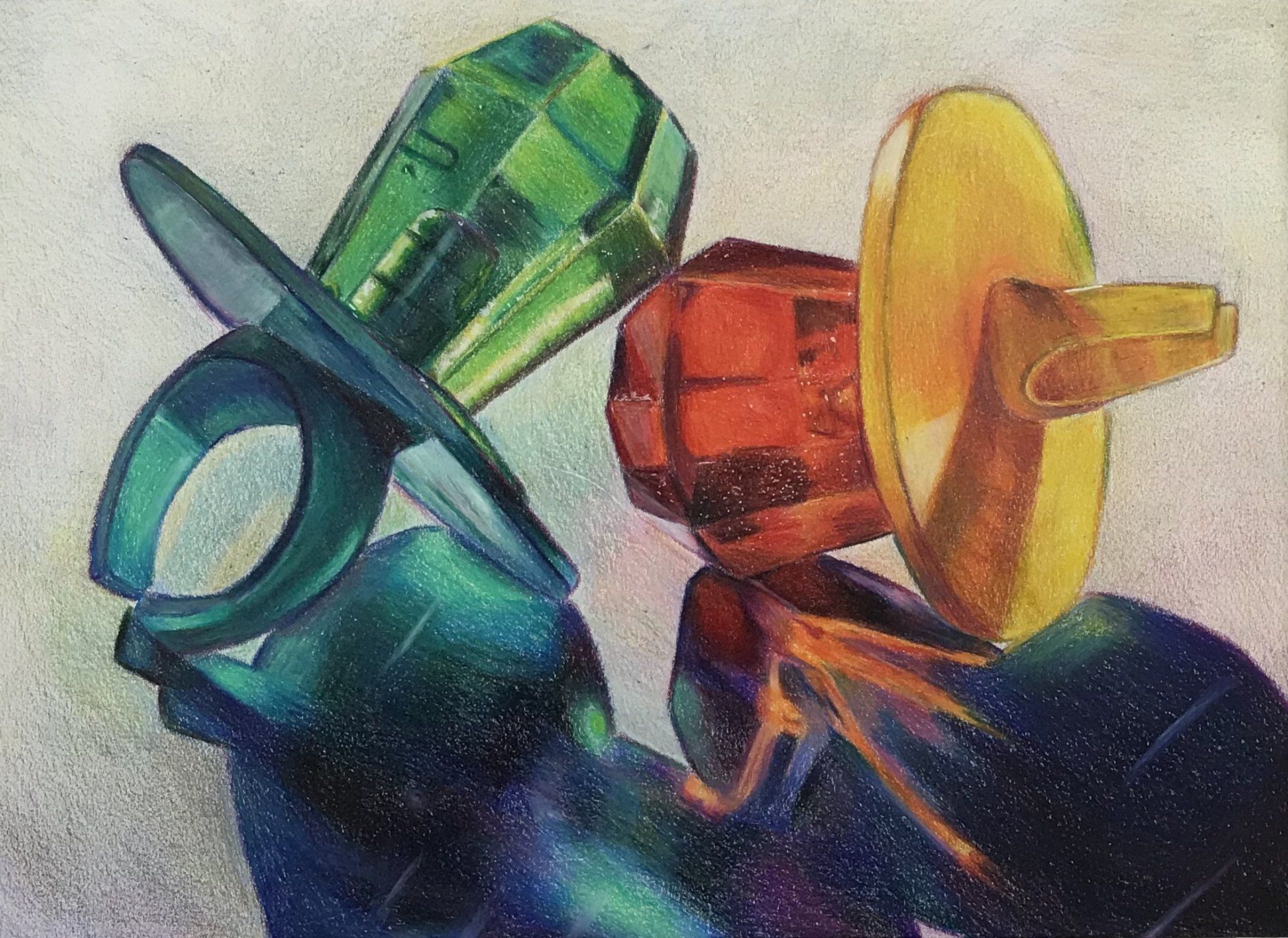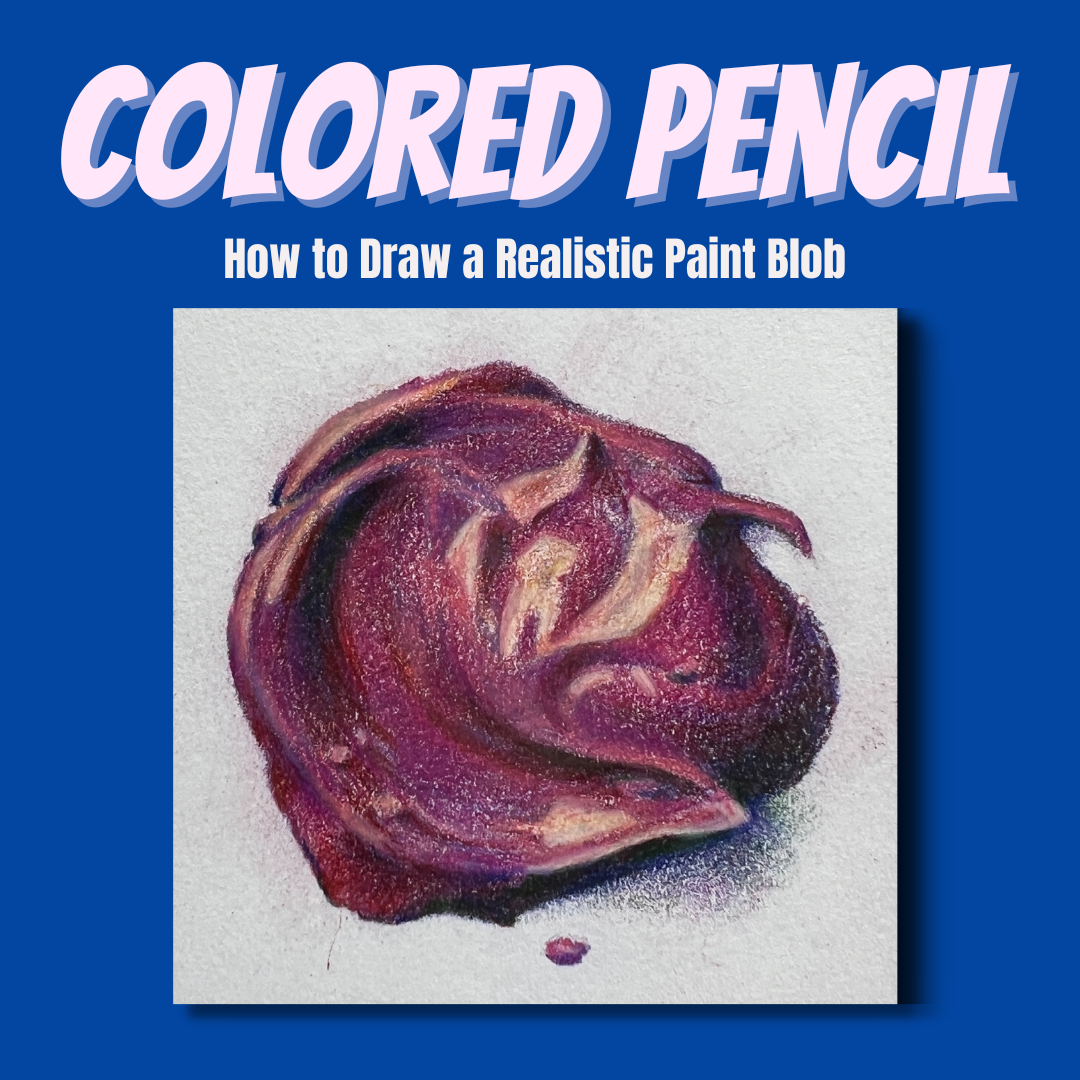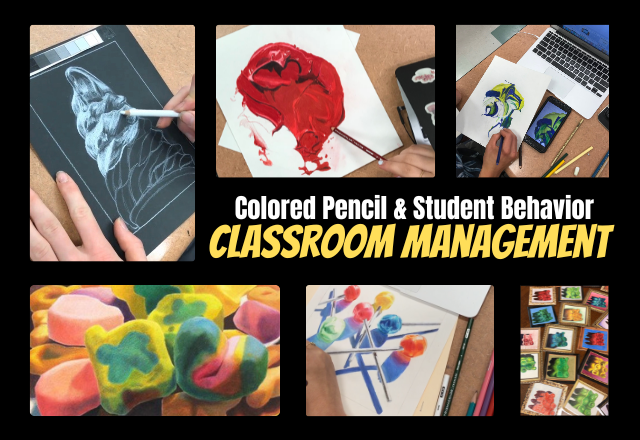Teaching Colored Pencils on a scaffold builds confidence that leads to engaged and driven students. That may sound simple or it may sound impossible, but it definitely works. And not for just middle and high school artists. I use this approach when I teach adults. Small steps. Big victories. Investment. Success.
I’m starting to see a theme…skills…confidence…success…
This post focuses on successfully teaching one of my all time favorite mediums – Colored Pencil – on a scaffolded model and how it can improve student behavior without you focusing on the behavior part at all.
The Goal
Listen people, at the end of the day I just want all my students to discover untapped skill and talent they never knew they had. Even if I only see them for 18 weeks and never again, they’ve seen a personal victory in my class. My drug of choice is watching people succeed.
This personal victory is one of my favorites…mastering Colored Pencils.
Every time I sit down to type a new blog post I come back to the same recurring Essential Questions – (for all my fellow AP Art Teachers out there)
“How can I convey the value of building student confidence by teaching skills?”
“What solutions can I offer to help someone who is struggling with kids who are struggling?”
“Where does the scaffolding begin – and how does it progress?
“Why should this matter? It’s only Art class…” (ever heard that one???)
“How do we battle this notion: ‘Who even cares’?” (certainly not the kids, right?)
Wrong.
The kids care. Not only do they care, but they want to learn and be challenged.
But how do we rally the entire group to focus on one goal – excellent productivity – no matter the class make-up – beginners, intermediate, advanced, into it, suffering through it, stuck in it, don’t give a crap….?
I teach high school and I see kids from all “art student” levels. Kids who are excited to take art and kids who are dying to get out of class and do anything BUT art. In full transparency I see more of the former than the latter, but we all know it only takes one of the latter to take the former down the rabbit hole into “Chaosville.”
Now. Back to Colored Pencil.
The Scaffolded Approach
For Colored Pencils, the scaffolded model looks like this:
Color Creation
Color Layering
Color Blending
Color Tinting
Color Toning
Color Shading
Value Transition
When we begin colored pencil – which can be very intimidating to both teach and learn – we start at the beginning. With Value Scales.
At this point in the course we have covered line, shape, space (negative), and value – with graphite pencil and in reverse with white colored pencil on black paper.
Introducing color after the reverse value lesson (white colored pencil on black paper) works well because the kids know the basics of using colored pencils (layering, pressure, value transition and overall supply care). Scaffolding the color theory and dimensional color concepts onto this knowledge is always successful. The learning from the reverse value lesson provides the confidence for the color portion.
This is also a great lesson to combine with basic color theory, especially if you don’t teach painting. It’s a super opportunity for kids to learn tinting, toning, shading, and how to create neutrals without using a black colored pencil.
The Confidence Boost
If you are looking for a lesson “hook” for kids to move on to your advanced classes, this is IT. The medium is tedious and challenging, no doubt. Once kids see what they can do and how endless the potential is there is almost no stopping them. We are only on our second day (colored pencil spheres) and I can see the excitement building already.
*Side Note: Alongside the excitement comes the frustration and the struggle. Be prepared for the exasperated sigh now and then. Even some whining from time to time. I personally think struggle is a good thing. Winning a battle feels great. I tell my kids to wrestle the media to the mat. Take it down. No giving up. Ever.
If you’re unfamiliar with colored pencils, or have never formally taught the medium, let me assure you, it’s easy to teach. The biggest key to success is to start slowly and give the kids a chance to “get a feel” for how the paper accepts the pencil – how many layers are possible? When does adding too many layers turn to a slimy mess? How do you burnish? How do you create a smooth transition of value?
All of these questions and concerns get answered and “worked out” in the Value Scales and Sphere Lessons. The kids need a chance to make mistakes prior to starting an actual drawing project. This medium has the ability to crush their overall confidence – it’s just too unforgiving. I like to say, “it’s the medium that you cheat on and it never takes you back” – a relationship analogy at the high school level works every time.
The Process
We begin with a value scale in every color – for students with accommodations I offer a 3-part value scale instead of my standard 5 or 7-part value scale. This gives them the experience of creating light and dark values of the hues but without the added stress of a complex value scale. These take about two days to complete (we are on block schedule – 90 min.every day). We run a quiet classroom model so two days is plenty of time.
*Cool Side Note: Custom color creation begins here. Colored Pencil offers students a chance to be unique in the way they layer and create their own versions of each color. Susie’s red-violet will not be the same as Jack’s red-violet – they will both make color choice and layering decisions that will yield a unique red-violet for each. Color becomes original to each student. Kids will eventually gravitate to what I call “signature color combinations” in their work. It’s so exciting for me to see this part of their visual voice emerge.
The size of the first few exercises are always small – it’s too intimidating to have them do a large project right off the bat. The Value Scales are small, the sphere is small (there are two sphere size options) and this helps the kids ease into it with confidence.
The next step in the scaffold is creating a soft value transition – this happens with the sphere. You may be thinking “good grief, woman, this is a slow process” and my response would be, “yes, it is. But it’s SO worth it.” The slow deliberate approach will have a monumental payoff. I promise.
The Evidence
The pieces below are from students who went into colored pencil kicking and screaming because they said it was too tedious and they couldn’t possibly do it…you be the judge as to whether they could “do it.”
*Side Note on artwork below: The girl who did the blue glasses nearly gave up in the beginning, the girl who did the lady with the flowers did give up and only started trying after we had a tough conversation (I can be very persuasive), the student who did the glass with the foil was a sophomore when she drew this (it was only her second colored pencil drawing) and the student who drew the broccoli told me she HATED colored pencil…(she went on to do her entire AP portfolio in this medium and earned a score 5). All of these students started with the Value Scales and Sphere exercises.




The Goal Revisited
Remember, our goal is success for all students. Not just the few who walk in, get it right away, and make the rest of the kids feel inadequate or untalented. Colored pencil is very unforgiving. If we don’t progress slowly we will have a very frustrated majority of students, and frustration can lead to negativity and this will often lead to apathy and chaos.
*Side Note: We teachers have to be in the room too. If the climate is one of frustration and off-task behavior, it’s miserable for everyone. The good news is we have the power to set the entire class up for success, and success leads to confidence and this results in a positive and calm classroom environment.
Once these foundational skills are in place, the sky’s the limit. You saw the pieces above. All of these students had never worked with colored pencil before and in a short amount of time they progressed to the works you see above.
We are moving into drawing subject matter next week and I am so thrilled to see what the kids do now that they are familiar with the medium and color creation. Keep an eye on our classroom Instagram @mrs_tfox and our Facebook Page Fox’s Fabulous Artists. I will post progress work in the IG Story and final pieces on the Facebook Page.
Thanks for stopping in and spending a few minutes.
Time is precious and I appreciate you reading this.
If you’re nervous about teaching this fabulous medium – DON’T BE. You got this. I have worked out the kinks in the lessons, created the narrated video tutorials, included reference images and rubrics. Try it and watch the fabulousness unfold. Your kids will create beautiful works of art! I guarantee it.
The Colored Pencil Lessons mentioned in the blog post are listed below with direct links to the shop.
Click directly on the lesson title:
Colored Pencil Value Scales – Prismacolor® Lesson
Colored Pencil Value Scales – Crayola® Brand Lesson
Colored Pencil Sphere Lesson – Prismacolor® Lesson
Colored Pencil Sphere Lesson – Crayola® Brand Lesson
For lots more beginner, intermediate and advanced level colored pencil lessons, check out the Colored Pencil section of the shop.
Please feel free to ask questions below or let me know if you’ve tried these lessons in your classroom. I would love to hear your experiences teaching Colored Pencils!
Be Among the First to Know
Please join my email list for “The Weekly Fabulousness” Newsletter, and get cool Art Teacher Freebies, new and updated product info, and Art Educator PD Workshop Dates (email subscribers get first dibs on seats!)
Not sure you’re interested in being on the list?
Check out my teaching style with a FREE Mini-Workshop!
Each one comes complete with classroom resources. Take all six!
Choose from these FREE workshop topics:
- Colored Pencil Basics
- Colored Pencil Skin Tones
- How to Draw the Human Eye
- Art Task Cards – Drawing on a Grid
- How to Draw Ice Cream
- Acrylic Painting Basics
Have a wonderful and safe year and Happy Teaching!
Tiff 🙂
colored pencils art
oil based colored pencils
vibrant colors
wax based colored pencils





Share This Post